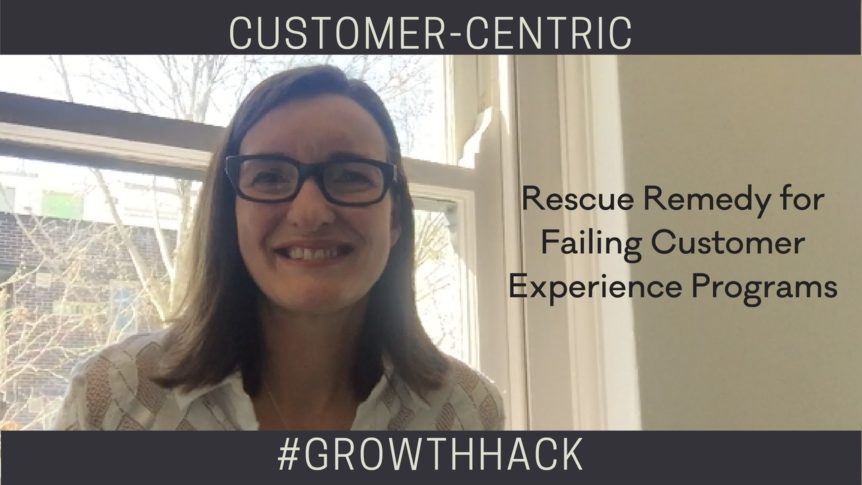See this Customer-Centric #GrowthHack live on Alex’s Facebook here
Sometimes in my consulting work I’m called in to get things back on track – the ‘CX Fix It’.
The Challenge
Often the customer experience (CX) initiative is failing because of competing business priorities such as: not meeting revenue forecasts or sales targets, operational focus on technology investments, changes in competitor offerings causing changes to the marketplace or a drop in customer satisfaction scores etc.
The work of improving customer experience is subsequently shifted to a lower priority. There can be a number of reasons why the customer experience strategy isn’t getting traction.
The Context
In most cases the main reasons are:
– The business is working from assumptions about customers;
– The CX action plan isn’t aligned across all business units;
– There is a lack of internal communication of the customer story;
– Two roles one resource, such as Marketing & CX combined;
– And the big one – Measuring CX success.
Customer-Centric #GrowthHack
Unfortunately, even though research clearly demonstrates the business value of improving customer experience, CX programs are often seen as ‘nice to have’ or ‘fluffy’.
I believe this is because traditionally, customer experience is reported using soft metrics such as customer satisfaction (CSAT) or recommendation (NPS) scores.
What I stress to clients is the need to reframe their CX program in terms of customer-centric growth. This requires understanding and reporting the financial value of customers (the hard metric) and the score (the soft metric).
Using financial language helps people across the business understand the results of customer experience initiatives in financial terms – because the CX work is linked to customer growth.
Start with business metrics such as customer retention, churn data or product/service upselling data. Once you have the numbers, you’ll need to understand the value of your customers in dollar terms.
This provides a financial metric that demonstrates customer purchasing behavior and this metric can then be coupled with CSAT or NPS scores in your reporting.
By combining hard and soft metrics in your reporting it helps clearly demonstrate to the business the link between CX effort and customer growth in language everyone understands.
Shifting from customer assumptions to insights
Master the skills of contextual enquiry journey mapping in my one-day workshop.
Learn how to identify your customers’ unmet needs; their frustrations, service gaps and what they value when interacting with your business.
Find out more about the workshop and how to reserve your seat here

